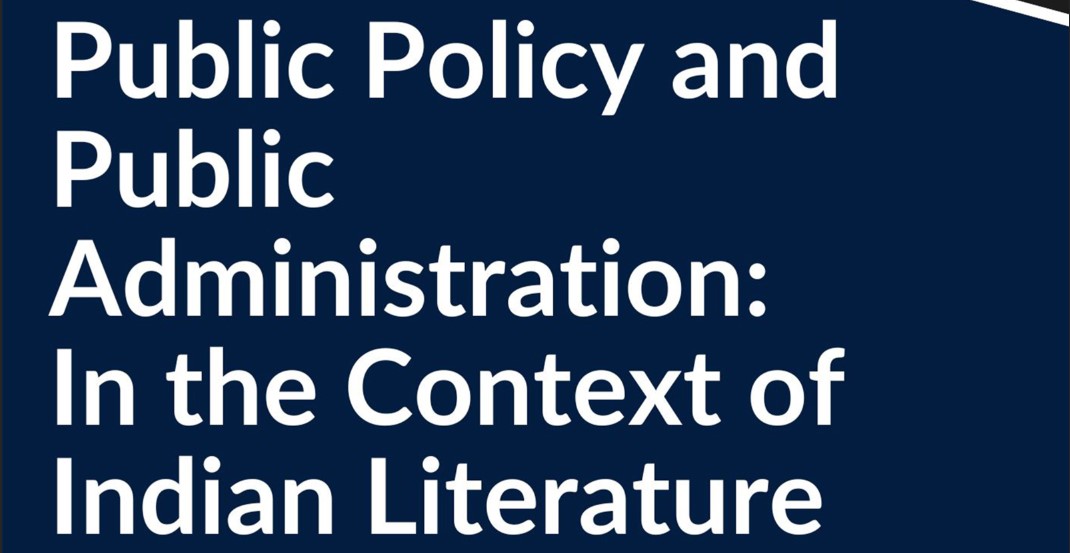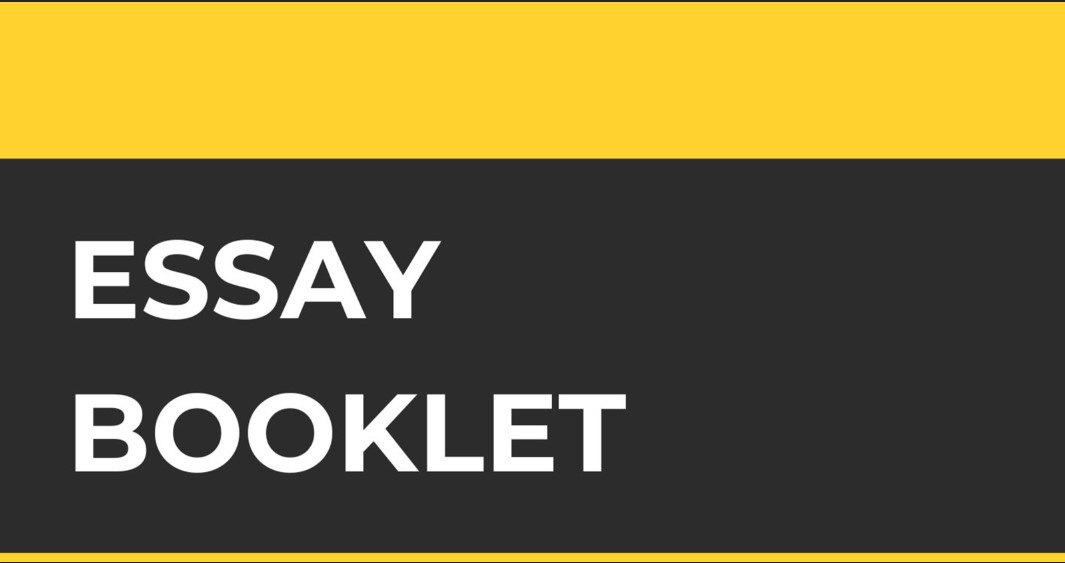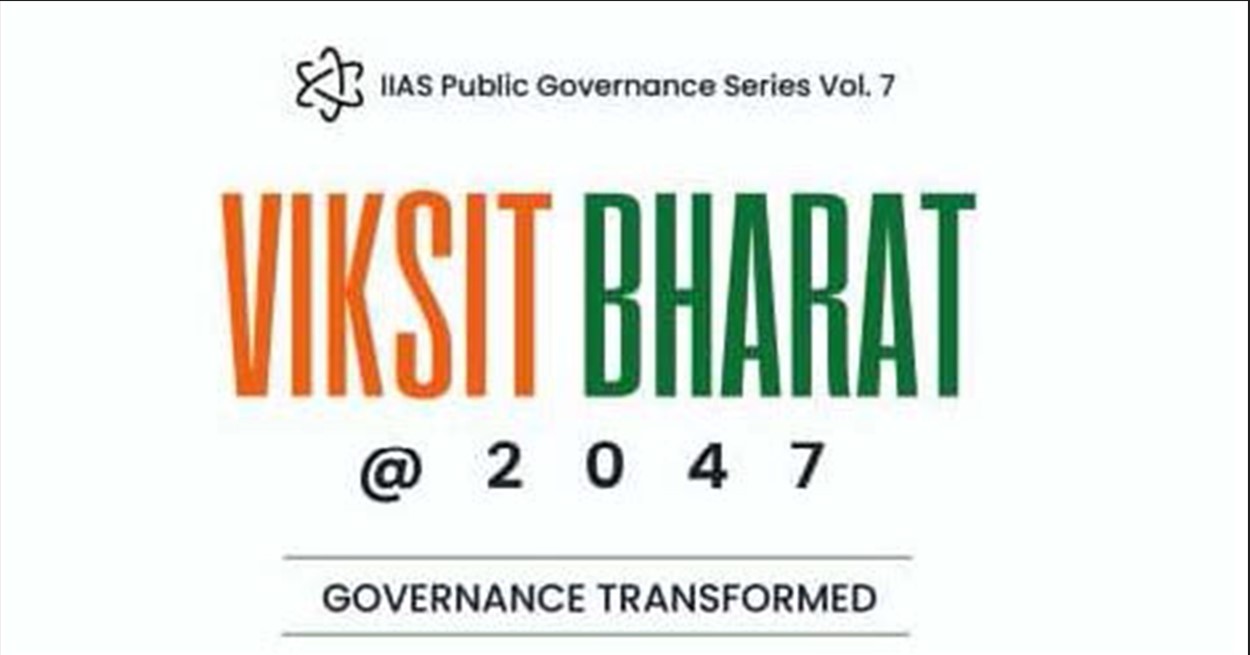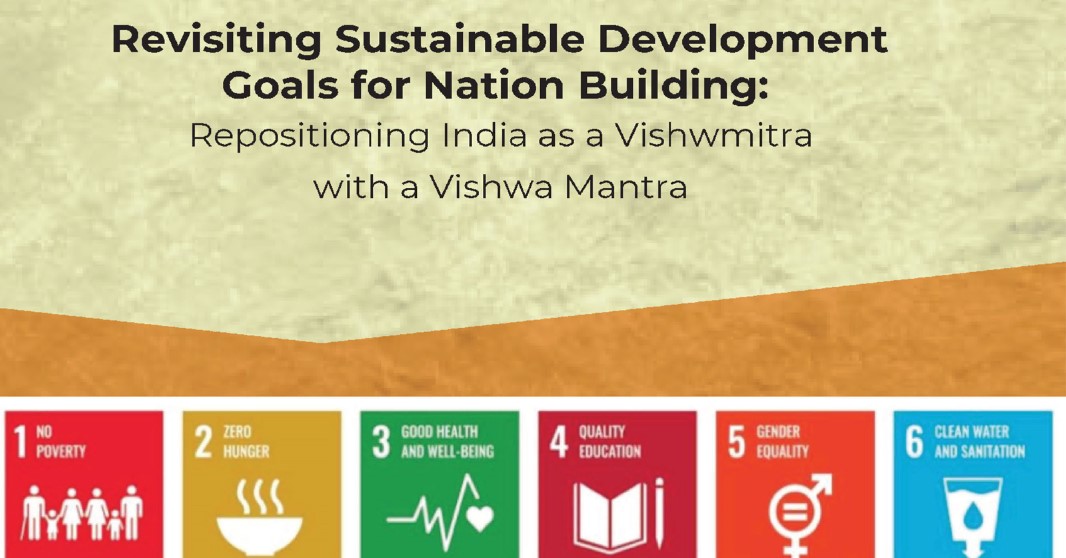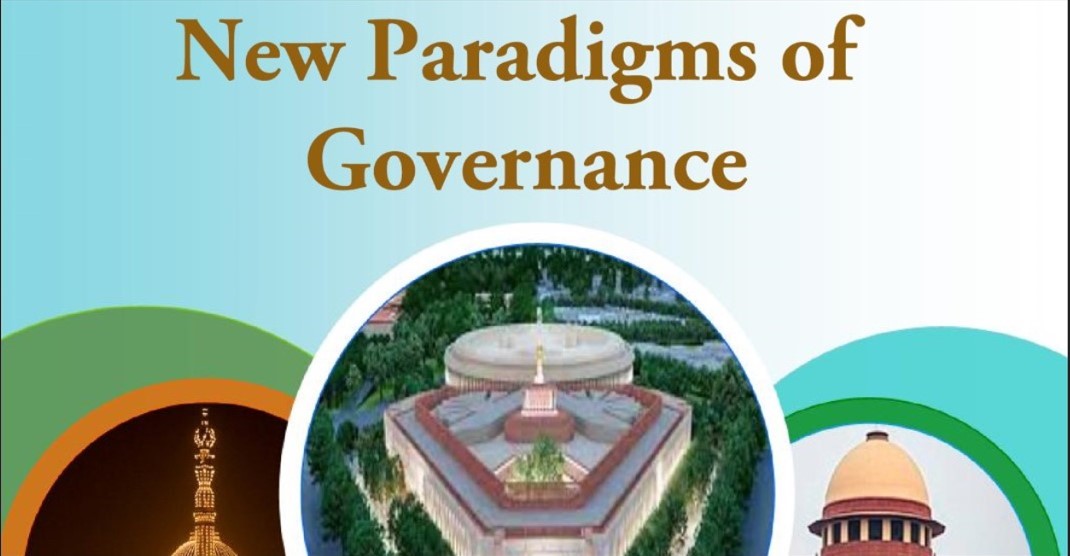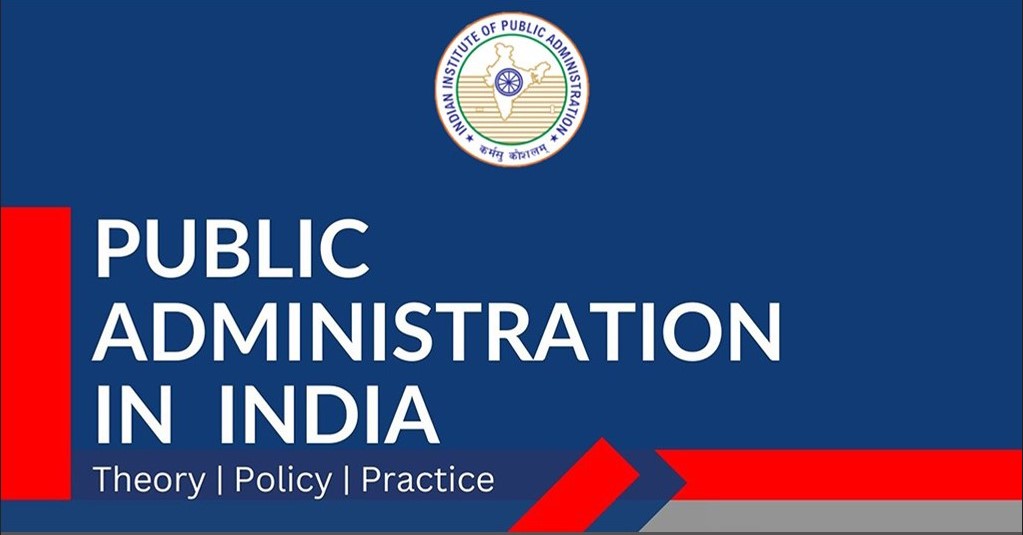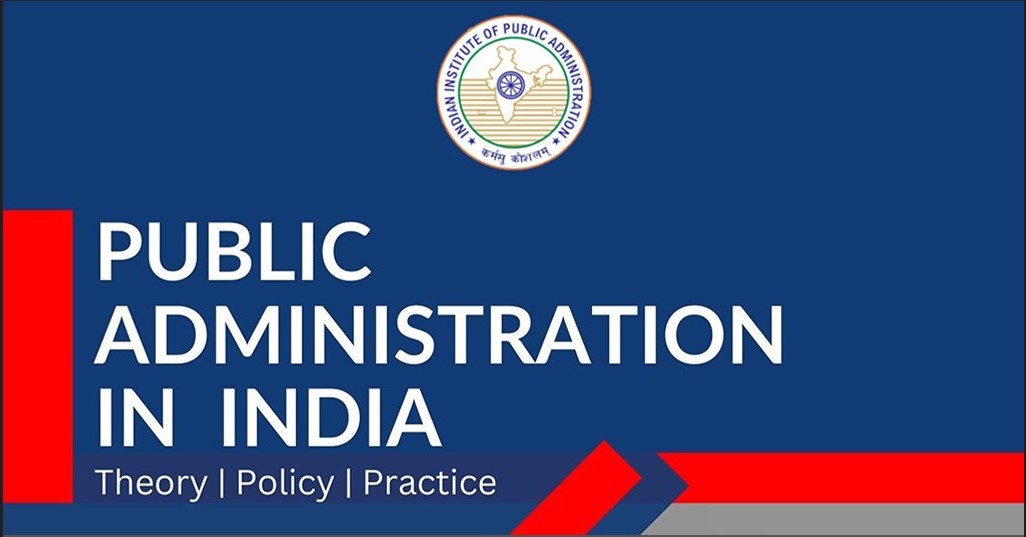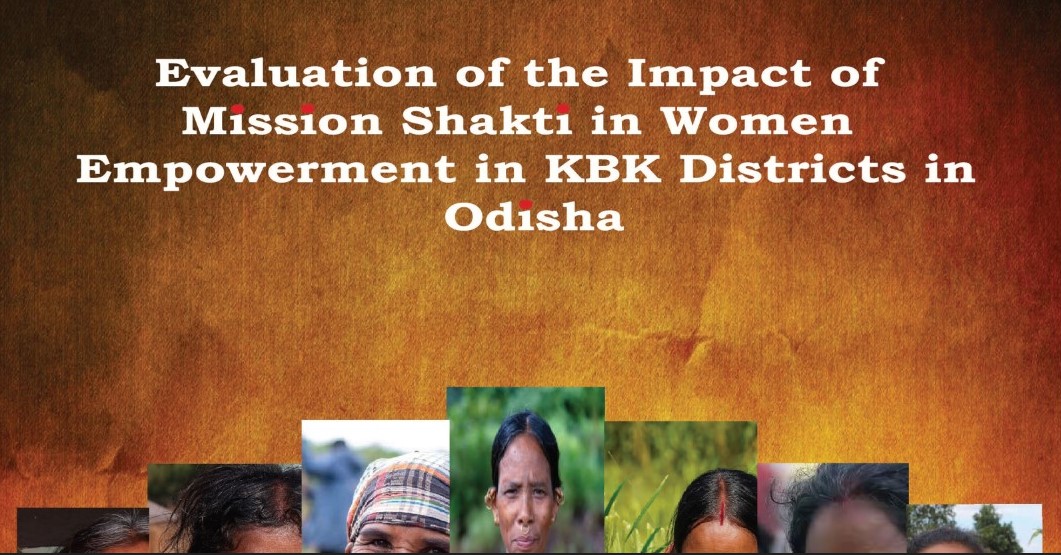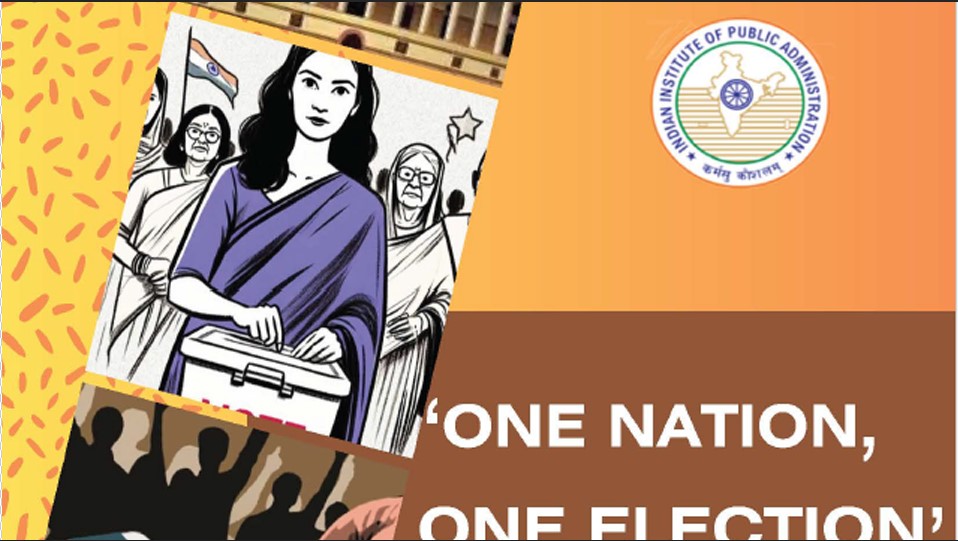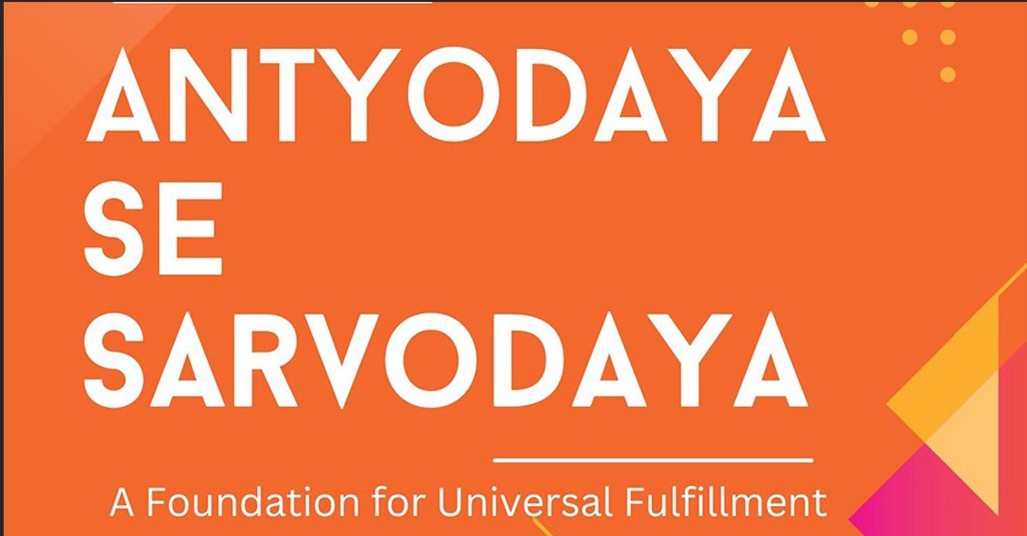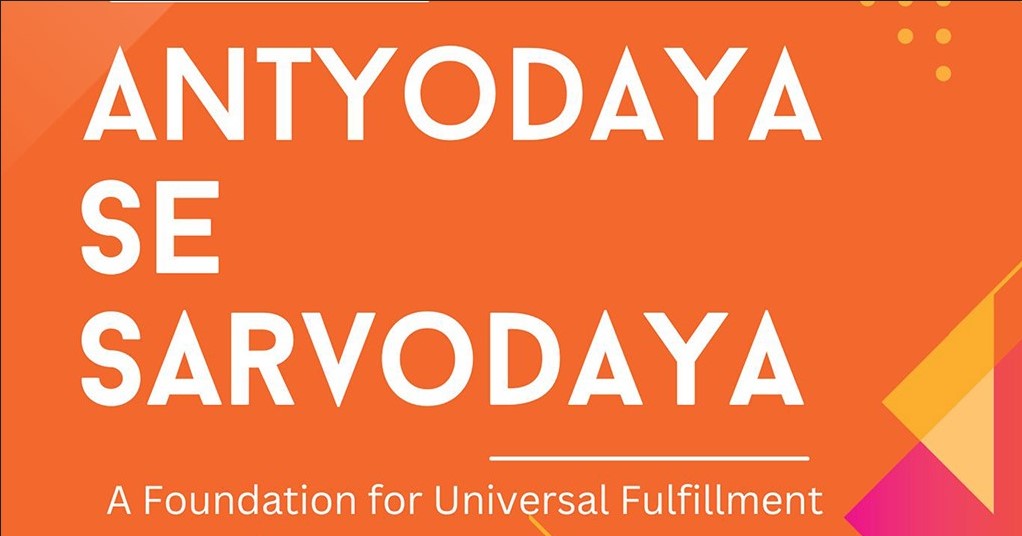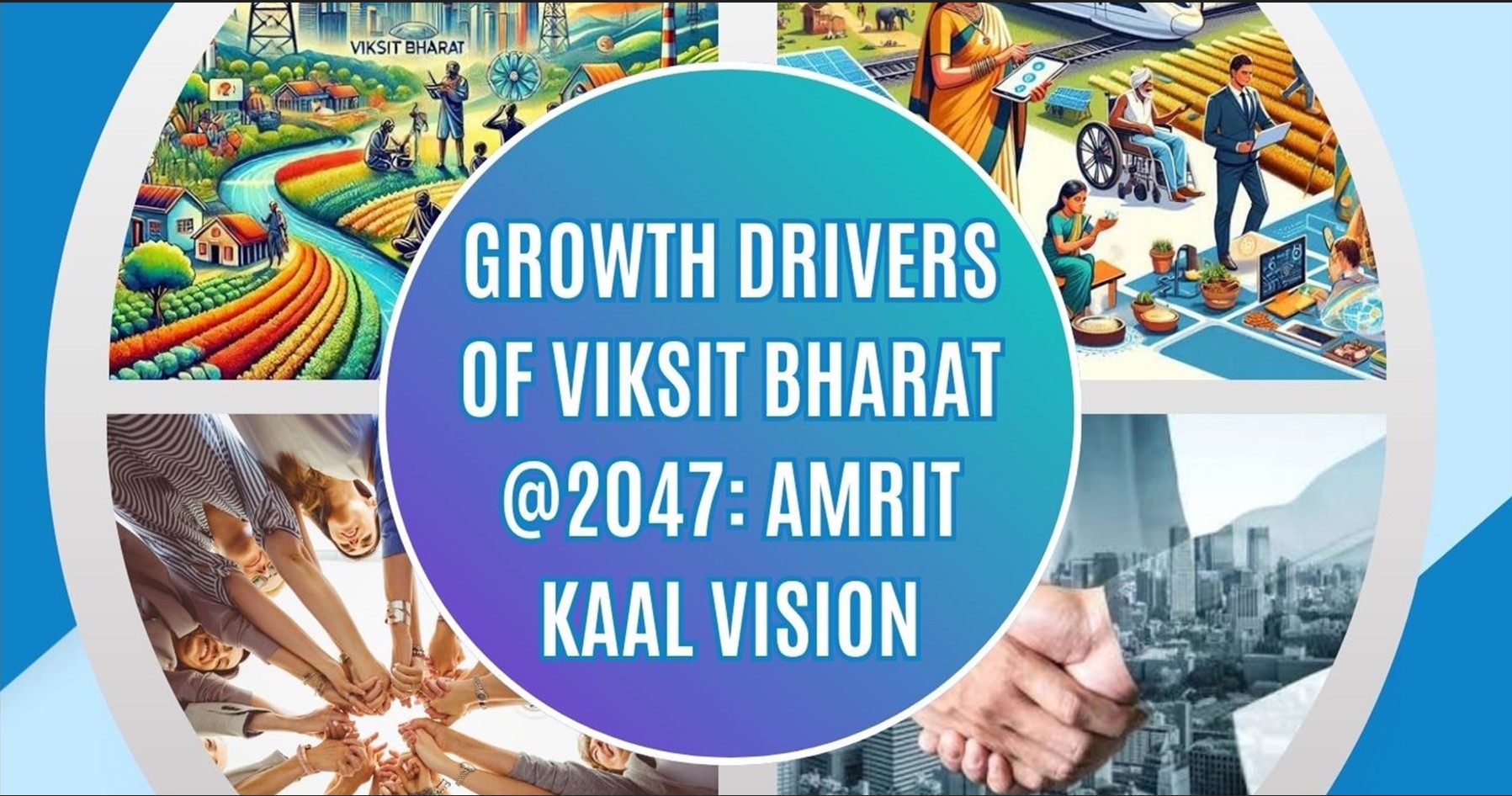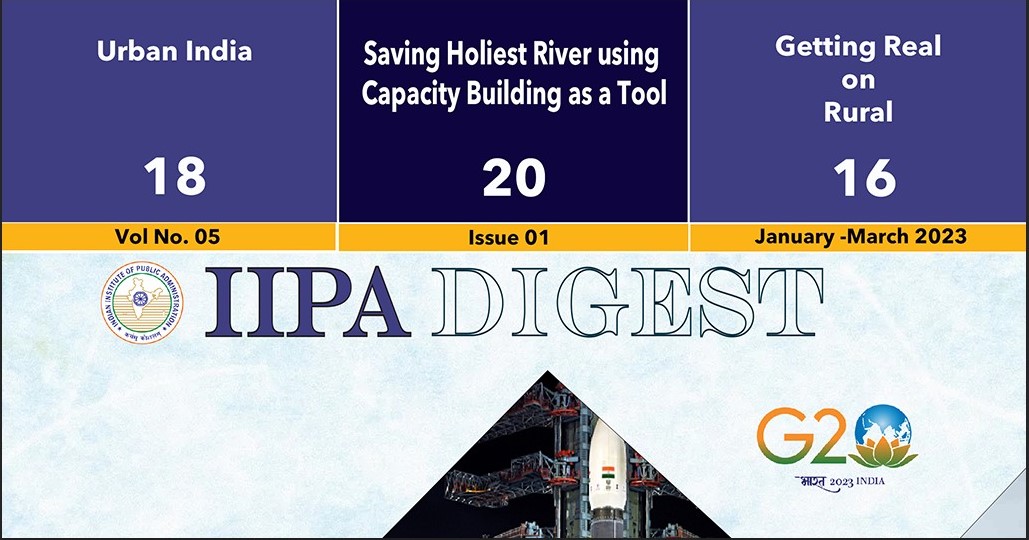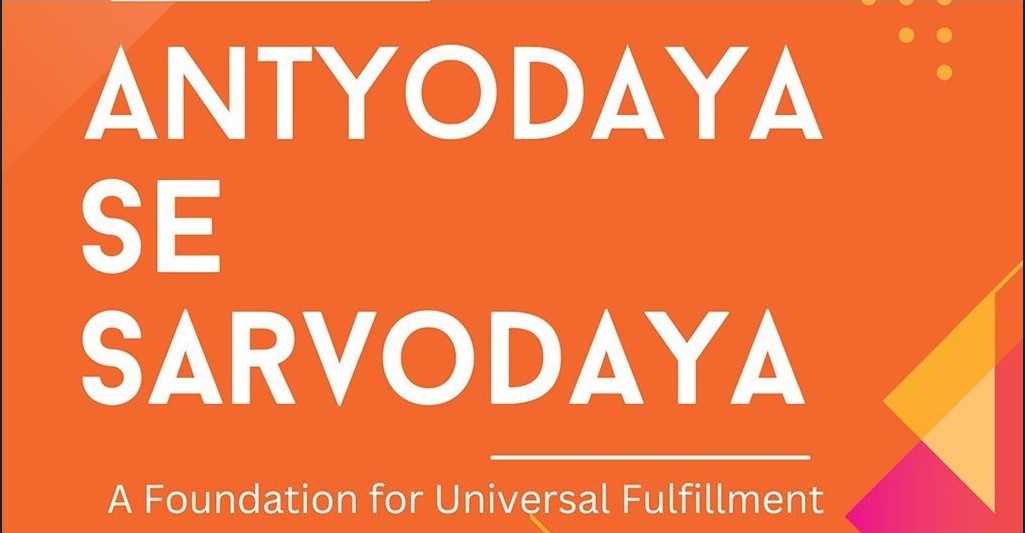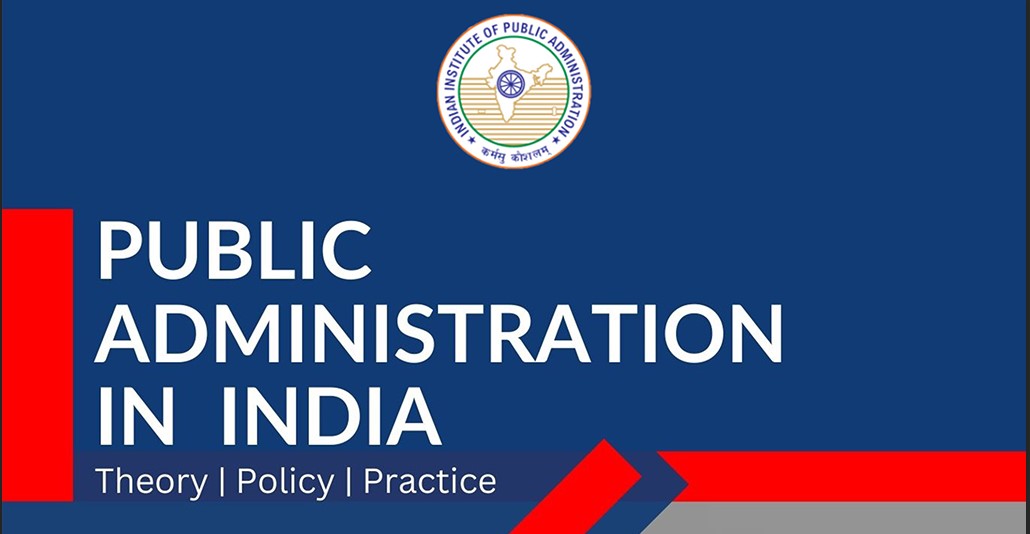Leadership’s Role in Achieving Inclusive Governance for Viksit Bharat @ 2047
Abstract
This paper explores the critical role of leadership in achieving inclusive governance as part of India’s vision for Viksit Bharat 2047, a developed nation by its centenary of independence. Leadership, at various levels, is essential in fostering policies and frameworks that promote equity, social justice, and active participation from all sections of society, especially marginalized groups. The paper examines how visionary, transformational, ethical, and participatory leadership can address challenges such as poverty, inequality, and regional disparities, while ensuring sustainable development. Through case studies and analysis, it highlights the importance of inclusive governance in driving the nation towards its development goals, emphasizing the need for capable and committed leaders to create an equitable and prosperous future for all.
Keywords: Viksit Bharat, leadership, prime minister, governance, global.
1. Introduction
Particularly in countries striving for fair and sustainable growth, the notion of inclusive government has become a cornerstone of contemporary developmental discourse. A thorough foundation for this desire is provided by the vision of Viksit Bharat 2047, which encompasses India's ambitions to become a fully developed nation by the centennial of its independence. In order to realize this goal, we must change the way we govern so that everyone, regardless of their gender, caste, religion, or location, is included. This will be an exciting and challenging path. Leadership is a key component of this life-altering adventure because it can bring people together, rally resources, and encourage responsibility.
All types of leadership are essential for conceiving of this revolutionary agenda and then making inclusive government a reality via the implementation of the necessary policies and structures. A vast mosaic of contrasts characterizes India's sociopolitical and economic environment. The country takes pride in its many accomplishments, including its leadership in technology and innovation, its expanding economy, and the demographic dividend it enjoys as one of the world's youngest countries. However, issues like poverty, unemployment, and prejudice, as well as geographical differences, continue to be structural problems. These problems call for a more inclusive style of leadership that takes into account both past wrongs and present obstacles to fair development. To overcome these obstacles and guide the nation toward a more equitable, inclusive, and progressive future, leadership is essential at all levels of government, from the office of the prime minister to the leaders of local panchayats.
At its core, inclusive government is about guaranteeing that all people, especially those from historically oppressed groups, have a say in policymaking and an equitable opportunity. Realizing that attaining justice requires focused interventions for those who have been persistently marginalized, it is about establishing structures that value equity over equality. In Viksit Bharat 2047, where inclusion is the foundation of development, this strategy is vital to achieving the objectives. To lead in this setting is to show the empathy, vision, and dedication that are necessary to help the downtrodden and promote communal improvement, not just to have a position of authority. The leadership needed to achieve an inclusive government is complex, requiring a blend of foresight, strategy, and execution. Leaders with vision share the hopes and dreams of all their constituents by outlining ambitious but achievable long-term objectives. For instance, the idea of a "Digital India" demonstrates a comprehension of how technology can improve governance and bridge disparities. To make this vision a reality, however, transformational leadership is needed to question the status quo, spark creativity, and pave the way for change. In some of the most neglected areas of India, transformational leaders at the district and state levels have shown how decentralized government, when done well, can improve healthcare, education, and infrastructure.
Integrity, openness, and responsibility in governing are hallmarks of ethical leadership, which is just as crucial. Government in India has a long history of failing due to corruption and inefficiency, which has weakened public confidence and made inequality worse. To restore faith and make sure that systems of government are really inclusive, we need leaders who put the common good ahead of their interests, whether politically or personally. To the same extent, policies and programs must be responsive to the needs and ambitions of the people they are meant to serve, and participative leadership, which involves individuals in the decision-making process, is essential for this. Participatory leadership can bring about transformation, as seen by initiatives like the Aspirational Districts Program. This programme encourages local communities to establish development objectives and track progress. The leadership of Viksit Bharat 2047 also has to deal with new problems that are popping up and take advantage of the opportunities that are popping up. One example is the digital revolution, which has opened up hitherto unseen avenues for improving service delivery and closing gaps. But until we bridge the digital gap, inequality will only grow. Thus, leaders should make sure that programs like BharatNet, which seek to provide internet access to remote regions, are executed fairly and efficiently. Similarly, leaders are needed who can ensure that progress does not compromise the well-being of future generations while simultaneously fostering economic growth and environmental stewardship, in line with the worldwide focus on climate action and sustainable development.
Politicians, bureaucrats, business executives, and members of civil society all play important roles in inclusive government. When it comes to making sure policies are effectively implemented and turned into programs, bureaucrats are indispensable. By bolstering skill development programs, investing in neglected areas, and generating new opportunities, business leaders may help bring people together economically and socially via their CSR projects. Leaders in civil society, such as educators, activists, and community organizers, are crucial in protecting the rights of vulnerable populations, bringing attention to the issue, and ensuring that governments face consequences for their actions. Leadership is essential for an inclusive government, but there are still many obstacles. Discrimination based on caste, gender inequality, and regional inequities are some of the structural impediments that still stand in the way of inclusive development. The execution of progressive initiatives is often impeded by bureaucratic opposition to change and institutional inertia. There is a limit to the breadth of inclusive governance due to the underrepresentation of disadvantaged groups in leadership roles in politics, the civil service, and business boards. In order to overcome these obstacles, we must make concerted and ongoing attempts to increase leadership diversity and establish systems that enable inclusive decision-making. Another important issue that has to be addressed is leadership development. In order to successfully traverse the intricacies of inclusive government, the leaders of tomorrow must possess the necessary knowledge, values, and abilities. In order to cultivate such leaders, educational institutions, training programs, and mentoring activities are crucial. To illustrate how to develop the kind of capable leaders needed for Viksit Bharat 2047, consider initiatives like the Atal Innovation Mission, which encourages young people to think creatively and take charge.
Inspiring collective action and fostering a feeling of shared responsibility among people is crucial for leaders to ensure the success of Viksit Bharat 2047. To overcome the enormous obstacles of ending poverty, achieving gender equality, advancing sustainable development, and strengthening social cohesiveness, we must work together across all boundaries, whether they are political, social, or economic. So, leaders need to unite different groups of people and persuade them to agree on a common objective. There are several instances in India's history of leaders with vision who have changed the country for the better. It is well-documented that leadership can drive revolutionary change. Mahatma Gandhi's nonviolent struggle galvanized millions for freedom, and visionary leaders like Jawaharlal Nehru and Sardar Vallabhbhai Patel established the framework for modern India. Swachh Bharat Abhiyan and Beti Bachao Beti Padhao are two recent examples of programs that show how dedicated leadership can rally the people behind a cause and make a difference in society. Viksit Bharat 2047 presents a chance for India to reimagine its path to growth and reach its full leadership potential at a pivotal juncture in its history. The only way to realize this potential is via an inclusive government, which can only be achieved through revolutionary leadership. Leaders may make sure that progress benefits everyone by cultivating an environment of fairness, openness, and involvement. Doing so will ensure that future generations are able to realize their dreams while also establishing a path toward a more equitable, affluent, and environmentally friendly future. In order to achieve inclusive governance for Viksit Bharat 2047, this article delves into the complex function of leadership. It takes a look at what makes a good leader, how to measure success in inclusive governance projects, and what obstacles and possibilities exist for leadership development. This article seeks to shed light on the crucial role of leadership in determining India's future and add to the current conversation on development and governance by offering suggestions and analysis to academics, practitioners, and policymakers.
2. Viksit Bharat and AI skills
An integral part of "Developed India" (or "Viksit Bharat") is the improvement of knowledge and competence in cutting-edge fields like artificial intelligence (AI). If India wants to continue growing and competing in the global digital economy, it has to make AI skill development a central part of Viksit Bharat's agenda. Here's how enhancing AI abilities may support Viksit Bharat's mission:
i. Economic Growth and Innovation: By increasing efficiency, productivity, and competitiveness in all kinds of businesses, AI might be a game-changer when it comes to driving innovation and economic development. New businesses, jobs, and sectors may spring up as a result of workers acquiring AI capabilities, which in turn boost the economy.
ii. Technological Advancement: With its many potential uses in fields as diverse as medicine, teaching, farming, and manufacturing, artificial intelligence (AI) is pushing the boundaries of technology. India has the potential to become a world leader in artificial intelligence (AI) technology development and implementation if it prioritizes AI research, education, and skill training.
iii. Job Creation and Employment: While AI has the potential to automate certain processes, it is also opening up new job possibilities in fields like data science, machine learning, and AI engineering. India can make sure its people are ready for the occupations of the future and can take advantage of the possibilities given by AI-driven businesses if it trains its workers to use AI.
iv. Education and Skill Development: To create a talent pipeline with AI-related competences, AI education and skill development should be integrated into school curriculum, higher education programs, and vocational training efforts. Essential for making good use of AI are not only technical abilities, but also the ability to think critically, solve problems creatively, and innovate.
v. Inclusive Growth and Accessibility: One way to encourage inclusive growth and eliminate socio-economic inequities is to make sure that everyone, especially women, rural areas, and underprivileged groups, can access programs that help them build their AI skills. Scholarships, training opportunities, and infrastructural help might be part of the solution for underprivileged communities.
vi. Ethical and Responsible AI Use: We must prioritise the appropriate and ethical use of AI as technology becomes increasingly integrated into society. A workforce that is cognizant of the ethical, privacy, and bias concerns of AI and can responsibly create AI solutions may be fostered via AI skill development programs that include these topics.
vii. Global Leadership and Collaboration: India can establish itself as a frontrunner in artificial intelligence (AI) innovation and governance by cultivating a thriving ecosystem via training and education, research cooperation, and worldwide alliances. Working together with other nations, groups, and universities may help move AI policy, standards, and research forward.
3. Viksit Bharat's relation to society’s inclusion
In the context of "Viksit Bharat" or "Developed India," the aspiration for an inclusive society is fundamental. An inclusive society ensures that all individuals, regardless of their background or circumstances, have equal access to opportunities, resources, and rights. Here's how the vision of Viksit Bharat can align to foster an inclusive society:
i. Education for All: Inclusive education is the foundation of an inclusive society. Children from all walks of life, especially those living in rural regions or from economically challenged families, should have the opportunity to get a high-quality education, and Viksit Bharat may work to make this a priority. Promoting inclusive pedagogical techniques that accommodate varied learning needs and styles is part of this effort, as are steps to remove obstacles, including poverty, prejudice, and lack of infrastructure.
ii. Social Equity and Justice: Raising income, wealth, and opportunity gaps is one way Viksit Bharat may work for social justice and fairness. To accomplish this goal and eliminate disparities in the provision of food, housing, healthcare, and employment, it may be necessary to establish social welfare programs, affirmative action laws, and progressive taxation policies.
iii. Gender Equality and Women's Empowerment: Gender equality and women's empowerment are highly valued in an inclusive society. The goal of Viksit Bharat should be to empower women to take charge in every area of society and to abolish violence, discrimination, and prejudices against them. This involves making sure that girls and women can participate in decision-making positions and have access to healthcare, education, and economic opportunities.
iv. Disability Rights and Accessibility: People with disabilities have rights, and Viksit Bharat may fight for those rights so that people with disabilities can fully participate in society. For people with disabilities to be able to fully participate in society and exercise their rights, it is necessary to make settings, infrastructure, and services accessible. This also includes providing support services, assistive technology, and reasonable accommodations.
v. Social Cohesion and Diversity: Promoting social cohesiveness and embracing variety are hallmarks of an inclusive society. With the help of Viksit Bharat, we can combat systematic prejudice and discrimination while simultaneously fostering understanding, acceptance, and cooperation among people of many religious, racial, linguistic, and cultural backgrounds.
vi. Rural-Urban Integration: By funding rural infrastructure, agriculture, and livelihood opportunities and advocating for urban planning and development that guarantees inclusive growth and equal access to services and amenities for both urban and rural populations, Viksit Bharat can promote balanced regional development and help close the gap between the two.
4. Schemes Announced in the wake of Viksit Bharat, 2047
The goals of Prime Minister Narendra Modi's Viksit Bharat program until the year 2047 were laid forth by Finance Minister Nirmala Sitharaman in the Interim Budget 2024. She said in her Budget 2024 address that the government is striving for development that is all-encompassing, all-pervasive, and all-inclusive. In order to bring Viksit Bharat's goal to fruition, the finance minister said in her address that the states must implement several reforms that promote development and progress. So, to back its milestone-linked reforms, the federal government is offering the state governments a loan of Rs. 75,000 crore, which they may pay back over 50 years without interest. Some of the goals of the Viksit Bharat plan include assisting micro, small, and medium-sized enterprises (MSMEs) in becoming more competitive.
Following Viksit Bharat 2047, the Minister of Finance announced the introduction of many new initiatives and the renewal of others that are already operational. A new Rooftop Solar Scheme, also known as the PM Suryodaya Yojana, was hinted at in the budget to install solar panels on one crore homes so that each one receives 300 units of free power every month. As a result of free solar power and selling excess power to distribution firms, homeowners stand to gain an estimated Rs 18000 per year in realized savings. For middle-class families living in slums, chawls, leased homes, or unapproved colonies, the government is introducing a housing initiative to assist in the construction or purchase of a home. Budget 2024 lays forth the government's plan to increase immunization for girls aged 9–14 in an attempt to reduce the prevalence of cervical cancer. Additionally, a plan to reach "Atmanirbharta" for oil seeds, including sunflower, sesame, peanut, mustard, and soybean, was outlined in the Budget 2024.
Comprehensive research into high-yielding varieties, value addition, procurement, market connections, crop insurance, and extensive use of modern agricultural practices will all be part of this Abhiyan project. Dairy producers will get assistance in managing foot and mouth disease via a recently established initiative for dairy development. Previous initiatives, like the National Livestock Mission, Rashtriya Gokul Mission, and Infrastructure Development Funds for Dairy Processing and Animal Husbandry, will serve as a foundation for the new program. A Rs 1 lakh crore corpus, funded by an interest-free loan for 50 years, was also announced by the government. By offering long-term funding or refinancing with extended tenors and zero or low-interest rates, this corpus aims to incentivize the private sector to increase research and innovation efforts. In order to encourage environmentally friendly development, the Budget 2024 opted to initiate a new bio-manufacturing and bio-foundry initiative. More eco-friendly options, including bioplastics, biodegradable polymers, bio-agri-inputs, and bio-pharmaceuticals, will be made available under this plan. A plan to encourage climate-resilient activities for the blue economy will also be launched by the government.
This plan will include adaptation and restoration measures, coastal aquaculture, mariculture, and an integrated and multi-sectoral approach. Version 2.0.
4.1 Existing Schemes and Programmes
Government savings of Rs 2.7 lakh crore were achieved by the Direct Benefit Transfer (DBT) of Rs 34 lakh crore under the Pradhan Mantri Garib Kalyan Yojana, which was funded through the PM Jan Dhan accounts. More money for 'Garib Kalyan' has been made possible by the savings. 78 lakh street sellers have received credit help via the PM-SVANidhi Yojana. There are 2.3 lakh sellers from this group who have been granted credit for the third time. All farmers, no matter how small or marginalized, get direct cash aid each year under the Pradhan Mantri Kisan Samman Nidhi (PM-KISAN) Yojana. In addition, four crore farmers have received crop insurance via the PM FasalBima Yojana (PMFBY). With the help of the Skill India Mission, 54 lakh young people have received new skills training, 1.4 crore young people have been taught, and 3,000 new ITIs have been founded. There have been several new establishments of universities and other institutions of higher learning, such as 390 of them, 15 AIIMS, 7 IITs, 7 IIMs, 16 IIITs, and many more. Under the Prime Minister's Mudra Yojana, a total of 43,000 loans totaling 22,500,000,000.00 have been approved to support young people's dreams of starting their businesses. Thirty crore rupees in loans have been approved for women business owners via the PM Mudra Yojana. Over 70% of the residences distributed under the PM Awas Yojana (Rural) are owned by women, either as solo owners or in joint ownership. There have been 38 lakh farmers benefited and 10 lakh jobs created as a result of the Pradhan Mantri Kisan Sampada Yojana. In order to provide 2.4 lakh SHGs and 60,000 people with loan connections, the Pradhan Mantri Formalisation of Micro Food Processing Enterprises (PMFME) Yojana was implemented.
The Indian government has launched many programs in an effort to double farmers' income, as outlined in a seven-point plan that it has put into place while keeping an eye on the country's agricultural sector. The Prime Minister's Kisan Sinchai Yojana (PMKSY) is centered on the principle of "per drop, more crops" (Kumar, 2023), which means that every single drop of water is significant. Government efforts to improve irrigation include both new and ongoing initiatives, such as sealing leaks, decreasing conveyance losses, and desilting canals, etc. A bigger area might be irrigated in this way. More than half of the world's arable land is located in rain-fed regions, and efforts are underway to boost crop yields in these areas (Kumar, 2023). A nationwide farm market, or electronic National Agricultural Marketing, or e-NAM, has been established to link around 585 marketplaces nationwide so that farmers may buy and sell food online. In addition, the Pradhan Mantri Fasal Bima Yojana (PMFBY) was introduced by the government. Every farming family receives a monetary subsidy of Rs 6,000 per year under the PM Kisan Samman Nidhi (PM KISAN). Soil Health Card (SHC) Scheme, PM Programme for Restoration, Awareness, Nourishment and Amelioration of Mother Earth (PM PRANAM), Farmer Producer Organizations (FPOs) and Farmer Producer Companies (FPCs), Parampragat Krishi Vikas Yojana (PKVY), Zero Budget Natural Farming (ZBNF), etc., all work to promote natural farming practices to lower cultivation costs. Other programs and initiatives, such as Mission For Integrated Development of Horticulture (MIDH), Farm mechanization through agriculture drones and machinery, Agri-startups, and agripreneurship (Kumar, 2023), have helped farmers see farming for what it truly is: a noble and lucrative enterprise.
5. A Transformative dialogue for the nation’s future
The renamed National Youth Festival 2025, now known as the Viksit Bharat Young Leaders Dialogue, was announced by Shri Mansukh Mandaviya, Union Minister of Youth Affairs and Sports, on November 18, 2024. The project seeks to discover and develop young talent by providing a forum for them to voice their ideas for a Viksit Bharat, in line with the Prime Minister's goal of increasing youth participation in determining India's future. On January 11th and 12th, 2025, this national gathering will be held in Bharat Mandapam in New Delhi.
Two main goals will be the center of the discussion: First, to recruit new political leaders among the youth of today, in response to the Independence Day speech of the Hon'ble Prime Minister, who had earlier called on one lakh young people from backgrounds other than politics to become involved in these areas. The National Youth Festival is an opportunity for young people with leadership potential to be recognized and encouraged while also giving them a voice to present their ideas for a better India to the Hon'ble Prime Minister.
Secondly, to establish a fair and open system of selection based on merit so that young people may have a positive impact on a Viksit Bharat. This effort highlights the government's dedication to equipping the next generation to propel India's development and prosperity.
Figure 1: Objective of Viksit Bharat Young Leaders Dialogue
5.1 Identify and Nurture Leaders
The goal of the Viksit Bharat Young Leader Dialogue is to find talented people from all walks of life in India who have the potential to become leaders. Their potential for successful leadership in a variety of fields is fostered via mentoring, training, and skill development programs. In order for these leaders to tackle difficult problems and make a difference, the program is trying to inculcate important traits like vision, honesty, and flexibility. Through supporting their development, the initiative aims to produce a group of young leaders who will take charge of Viksit Bharat 2047 and work towards a more just and progressive future.
5.2 Platform for Youth Vision
In the Viksit Bharat Young Leader Dialogue, India's brightest young brains get the chance to share their plans for the country's future. It inspires young people to work together, offer creative solutions to problems, and build a better future for all of us. This program gives young leaders a platform to share their ideas for the future of the country and makes sure their voices are heard as they work to make Viksit Bharat 2047 a reality by encouraging open communication and innovative thinking.
5.3 Connect Youth with Decision Makers
The Viksit Bharat Young Leader Dialogue bridges the gap between aspiring young leaders and key decision-makers, fostering meaningful interactions and collaborations. By facilitating direct engagement with policymakers, industry leaders, and community influencers, the initiative ensures that the voices, ideas, and aspirations of the youth are integrated into the decision-making process. This connection empowers young leaders to contribute effectively to policy formulation and implementation, driving inclusive and forward-thinking governance for the realization of Viksit Bharat 2047.
5.4 Empower Youth for Viksit Bharat
The Viksit Bharat Young Leader Dialogue is committed to empowering youth as key drivers of India’s transformation into a developed nation by 2047. Through capacity-building initiatives, mentorship, and access to resources, it equips young leaders with the knowledge, skills, and confidence to tackle national and global challenges. By fostering innovation, inclusivity, and active participation, the initiative enables the youth to take ownership of India’s developmental journey, ensuring their pivotal role in shaping a prosperous, equitable, and sustainable future for Viksit Bharat.
6. Conclusion
The Viksit Bharat Young Leader Dialogue serves as a crucial platform for empowering the youth of India, nurturing their leadership potential, and fostering their active involvement in the nation’s development. By providing opportunities for young leaders to express their vision, engage with decision-makers, and acquire essential skills, the initiative plays a vital role in shaping the future of India. As the country moves toward its goal of becoming a developed nation by 2047, the youth must not only be included but also at the forefront of driving change. With their energy, innovation, and commitment, the youth will be instrumental in realizing the vision of a Viksit Bharat, a prosperous, inclusive, and sustainable India for generations to come.
References
1. Abhyankar, N., Mohanty, P., Deorah, S., Karali, N., Paliwal, U., Kersey, J., &Phadke, A. (2023b). India’s path towards energy independence and a clean future: Harnessing India’s renewable edge for cost-effective energy independence by 2047. The Electricity Journal, 36(5), 107-273.
2. Alae-Carew, C., Bird, F. A., Choudhury, S., Harris, F., Aleksandrowicz, L., Milner, J., Joy, E. J. M., Agrawal, S., Dangour, A. D., & Green, R. (2019). Future diets in India: A systematic review of food consumption projection studies. Global Food Security, 23, 182–190.
3. Singh, N. R. (2024). Inclusive and Viksit Bharat 2047: A proactive strategy to a better future. Educational Administration: Theory and Practice, 30(5), 1-10.
4. Chopra, R., & Bisht, C. (2024). Charting the course towards Viksit Bharat: A comprehensive exploration of India's path to development. Educational Administration: Theory and Practice, 30(5), 9023-9033.
5. Dasgupta, A. (2020). Challenges in Indian higher education. Journal of Education and Social Policy, 7(1), 20-26.
6. Deem, R. (2001). Globalization, new managerialism, academic capitalism, and entrepreneurialism in universities: Is the local dimension still important? Comparative Education, 37(1), 7-20.
7. Etzkowitz, H., & Leydesdorff, L. (2000). The dynamics of innovation: From national systems and "Mode 2" to a triple helix of university-industry-government relations. Research Policy, 29(2), 109-123.
8. Kumar, N. (2016). Evolution of higher education in India: Policy perspectives. Higher Education for the Future, 3(1), 15-23.
9. Rajput, N. (2021). Transforming higher education in India: National education policy 2020. Journal of Educational Change, 22(3), 315-330.
10. Sharma, V. (2022). Digital transformation of higher education in India. Journal of Online Learning, 18(2), 112-125.
Leave a comment
More articles from Governance & Polity
